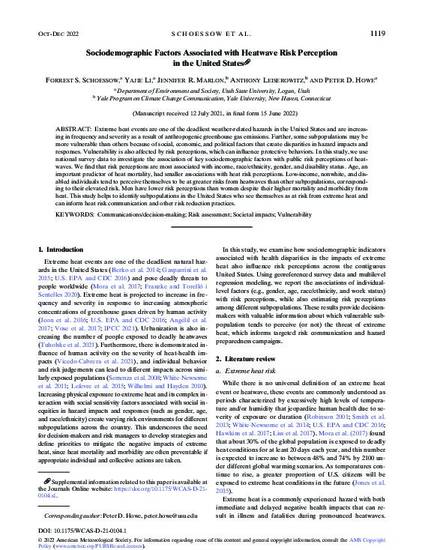
Article
Sociodemographic Factors Associated with Heatwave Risk Perception in the United States
Weather, Climate, and Society
(2022)
Abstract
Extreme heat events are one of the deadliest weather-related hazards in the United States and are increasing in frequency and severity as a result of anthropogenic greenhouse gas emissions. Further, some subpopulations may be more vulnerable than others because of social, economic, and political factors that create disparities in hazard impacts and responses. Vulnerability is also affected by risk perceptions, which can influence protective behaviors. In this study, we use national survey data to investigate the association of key sociodemographic factors with public risk perceptions of heatwaves. We find that risk perceptions are most associated with income, race/ethnicity, gender, and disability status. Age, an important predictor of heat mortality, had smaller associations with heat risk perceptions. Low-income, nonwhite, and disabled individuals tend to perceive themselves to be at greater risks from heatwaves than other subpopulations, corresponding to their elevated risk. Men have lower risk perceptions than women despite their higher mortality and morbidity from heat. This study helps to identify subpopulations in the United States who see themselves as at risk from extreme heat and can inform heat risk communication and other risk reduction practices.
Disciplines
Publication Date
2022
DOI
https://doi.org/10.1175/WCAS-D-21-0104.1
Citation Information
Peter D Howe. "Sociodemographic Factors Associated with Heatwave Risk Perception in the United States" Weather, Climate, and Society Vol. 14 Iss. 4 (2022) p. 1119 - 1131 Available at: http://works.bepress.com/peter_howe/108/
